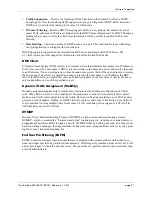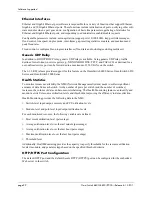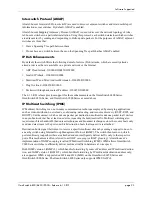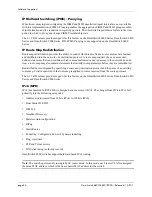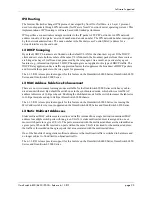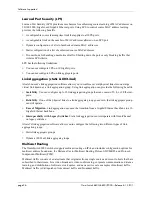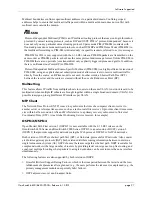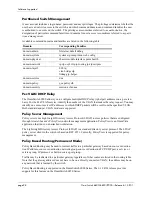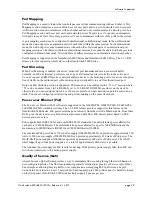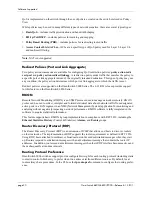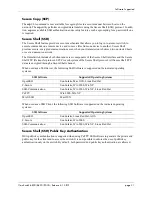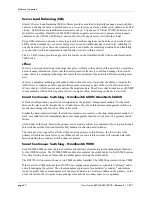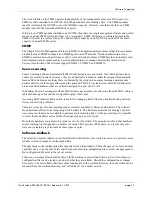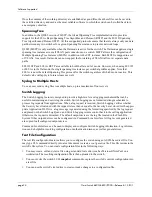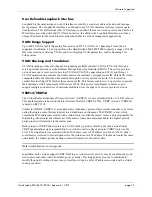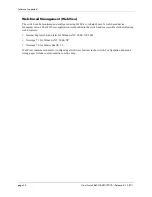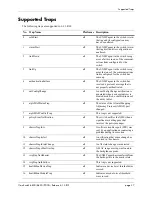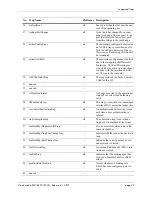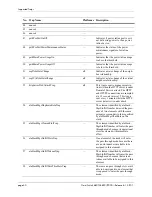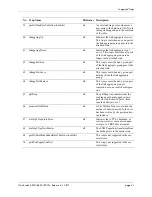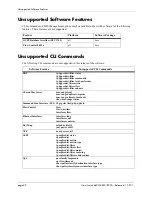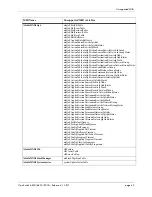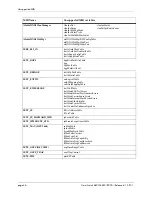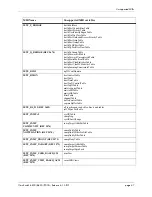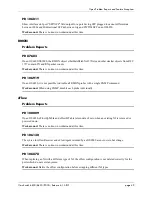
Software Supported
page 34
OmniSwitch 6800/6850/9000—Release 6.1.3.R01
Once the contents of the working directory are established as good files, then these files can be saved to
the certified directory and used as the most reliable software to which the switch can be rolled back to in
an emergency situation.
Spanning Tree
In addition to the Q2005 version of MSTP, the Alcatel Spanning Tree implementation also provides
support for the 802.1w Rapid Spanning Tree Algorithm and Protocol (RSTP) and the 802.1D Spanning
Tree Algorithm and Protocol (STP). All three supported protocols ensure that there is always only one data
path between any two switches for a given Spanning Tree instance to prevent network loops.
Q2005 (MSTP) is only available when the flat mode is active for the switch. The flat mode applies a single
spanning tree instance across all VLAN port connections on a switch. MSTP allows the configuration of
Multiple Spanning Tree Instances (MSTIs) in addition to the CST instance. Each MSTI is mapped to a set
of VLANs. As a result, flat mode can now support the forwarding of VLAN traffic over separate data
paths.
802.1D STP and 802.1w RSTP are available in both the flat and 1x1 mode. However, when using 802.1D
or 802.1w in the flat mode, the single spanning tree instance per switch algorithm applies. Note that
802.1w is now the default Spanning Tree protocol for the switch regardless of which mode is active. This
default value will apply to future releases as well.
Syslog to Multiple Hosts
You can now send syslog files to multiple hosts, up to a maximum of four servers.
Switch Logging
The Switch Logging feature is designed to provide a high-level event logging mechanism that can be
useful in maintaining and servicing the switch. Switch Logging uses a formatted string mechanism to
process log requests from applications. When a log request is received, Switch Logging verifies whether
the Severity Level included with the request is less than or equal to the Severity Level stored for the appro-
priate Application ID. If it is, a log message is generated using the formatting specified by the log request
and placed on the Switch Log Queue, and Switch Logging returns control back to the calling application.
Otherwise, the request is discarded. The default output device is the log file located in the Flash File
System. Other output devices can be configured via Command Line Interface. All log records generated
are copied to all configured output devices.
Command Line Interface can be used to display and configure Switch Logging information. Log informa-
tion can be helpful in resolving configuration or authentication issues, as well as general errors.
Text File Configuration
The text file configuration feature allows you to configure the switch using an ASCII-based text file. You
may type CLI commands directly into a text document to create a
configuration
file
. This file resides in the
switch’s file system. You can create configuration files in the following ways.
•
You may create, edit and view a file using a standard text editor (such as Microsoft NotePad) on a
workstation. The resulting configuration file is then uploaded to the switch.
•
You can invoke the switch’s CLI
snapshot
command to capture the switch’s current configuration into
a text file.
•
You can use the switch’s text editor to create or make changes to a configuration file.


